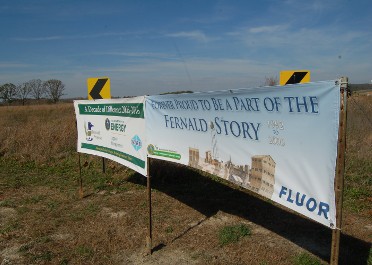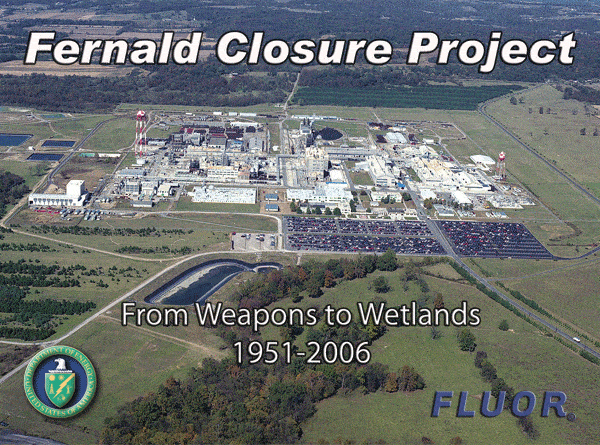Improving Incident Investigations and Root Cause Analyses, and Reducing Incident Rates at Fernald

Using TapRooT® to Improve Incident Investigations and Root Cause Analyses, and to Reduce Incident Rates
Submitted by Ronald L. Joseph, Investigation and Analysis Manager at Fernald (a DOE Site)
This success story was written in the past and is being updated to our most recent blog article format and reposted here. The example shows how TapRooT® Root Cause Analysis can help improve incident investigations and root cause analysis. Also, it shows the results – reduced incident rates. These lessons shared in this success story apply just as much today as they did when this was written.
Challenge
The Fernald Environmental Management Project (FEMP) is a former uranium processing facility located approximately 18 miles northwest of Cincinnati and operated by Fluor Fernald, Inc. for the U.S. Department of Energy (DOE). In 1994, the FEMP had implemented a relatively new process of reporting occurrences to the DOE via the Occurrence Reporting and Processing System (ORPS). However, our processes for investigating and analyzing our occurrences were inconsistent and fragmented in multiple departments. Our incident investigation methods were criticized because they were too subjective and incomplete. We searched for a system that would give us an objective, comprehensive, and defendable process for incident investigations that would satisfy the DOE.
Action
In March of 1994, two of our investigators were sent to a 5-Day TapRooT® Advanced Root Cause Analysis Team Leader Training in Knoxville, Tennessee. Upon their return from the course, efforts began to obtain a site license and to implement the TapRooT® System for our ORPS-related incidents.
Site-specific investigation procedures were developed and implemented that required the use of the TapRooT® System for reportable occurrences. Training courses were licensed from System Improvements and given to hundreds of managers, supervisors, union leaders, and employees across the site. In concert with the implementation of TapRooT®, a centralized Incident Investigation Team was created with the sole purpose of conducting all ORPS-reportable occurrence investigations, in order to promote even more consistent investigation and reporting practices.
The DOE, FEMP Management, and our Union Leadership were all immediately impressed with the TapRooT® Process for many reasons. Collectively, they could see that TapRooT® Root Cause Analysis was not only an effective process for investigating and analyzing incidents, but that it could also promote better management-employee relations, improve procedures, and be used proactively to prevent incidents before they occurred.
Results
As stated earlier, the primary purpose of purchasing the TapRooT® System was for analyzing ORPS-reportable incidents. In the five years prior to purchasing the TapRooT® License, the FEMP experienced an average of over 100 reportable occurrences per year. In the five years after licensing, we have reduced our incident rate to about 46 per year.
Furthermore, the safety significance of our incidents has also been reduced. In ORPS, there are some reporting criteria that are very subjective in nature. In the first five years, incidents classified in the subjective criteria accounted for only 16% of the total incidents. Today, subjective reporting has increased to about 60% of the total number of incidents. This means that our process has worked to eliminate “significant” events and raise the significance of events that were previously considered to be minor in nature. In effect, we have taken great strides in “melting the process safety iceberg,” as illustrated in the TapRooT® Training.
Given the success of using the TapRooT® Process in ORPS, we have expanded its application to other areas, including Price-Anderson Reporting, OSHA injuries, and self-identified concerns. As with ORPS, incredible improvements are now being realized. For example, we recently broke the site record for Safe Work Hours (8 million) and also passed the 8-year mark without a lost-time injury to our construction contractors. In the area of Price-Anderson, our performance has also been exemplary in that we are one of the few DOE sites without an enforcement action on our record.
Path Forward
While our results in our targeted areas have been beyond our initial expectations, we can now envision the improvement of all our processes to a previously believed unattainable level. Our goal now is the complete elimination of all incidents and injuries, no matter how small or relatively insignificant. In other words, we will strive to COMPLETELY melt the iceberg! Our Management has seen the tangible benefits of our efforts in reduced costs in insurance premiums, reduced project downtime, and the prevention of civil penalties for poor QA and Radiological Control performance.
Given our success in improving safety, performance, and reliability in our target areas, we feel that nothing is beyond our grasp. With the addition of the TapRooT® Software and the Trending programs, we are well-equipped to meet our ultimate goal.
[Note: The decommissioning of Fernald was completed in October or 2006.]




